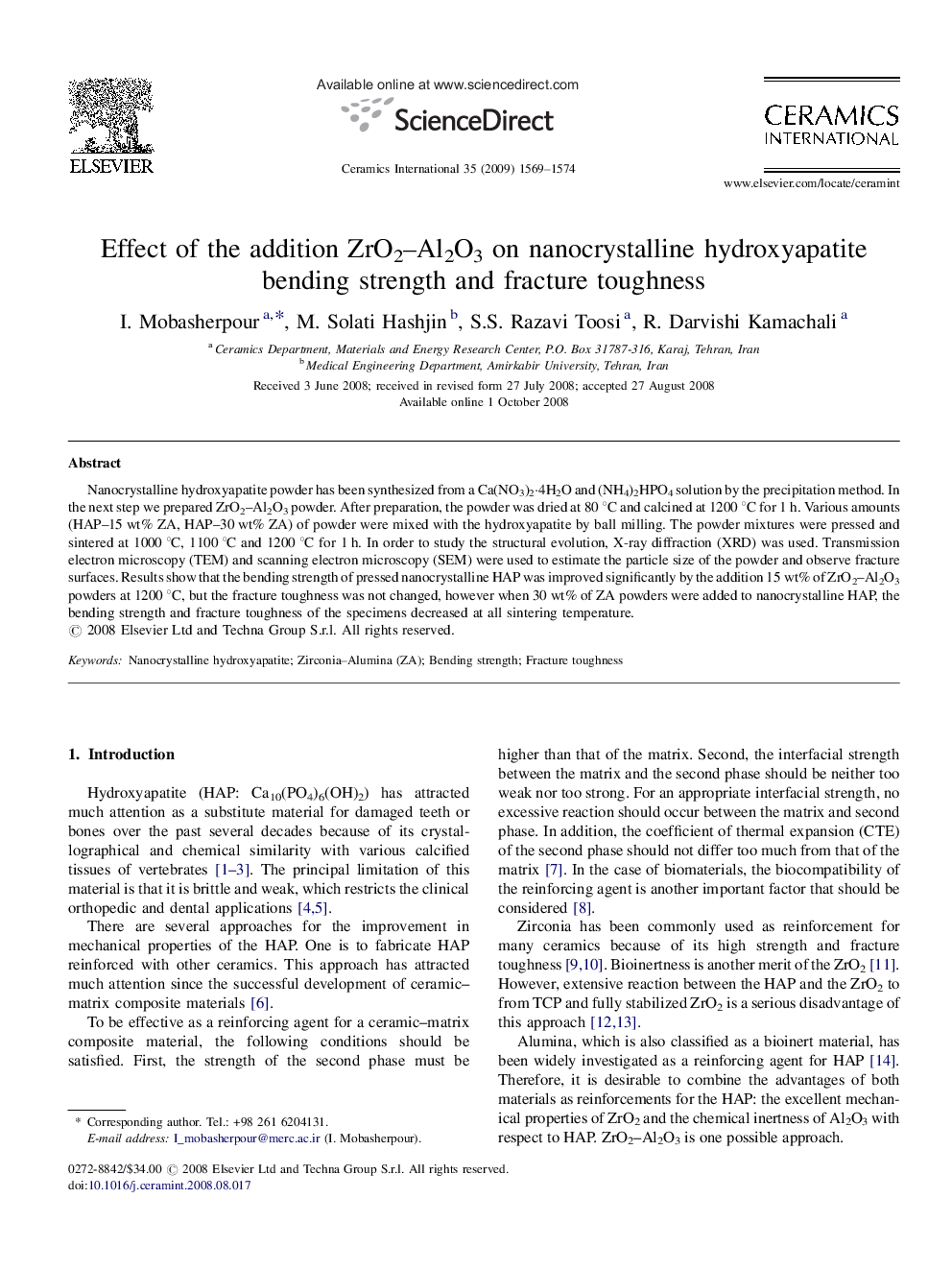| Article ID | Journal | Published Year | Pages | File Type |
|---|---|---|---|---|
| 1465328 | Ceramics International | 2009 | 6 Pages |
Nanocrystalline hydroxyapatite powder has been synthesized from a Ca(NO3)2·4H2O and (NH4)2HPO4 solution by the precipitation method. In the next step we prepared ZrO2–Al2O3 powder. After preparation, the powder was dried at 80 °C and calcined at 1200 °C for 1 h. Various amounts (HAP–15 wt% ZA, HAP–30 wt% ZA) of powder were mixed with the hydroxyapatite by ball milling. The powder mixtures were pressed and sintered at 1000 °C, 1100 °C and 1200 °C for 1 h. In order to study the structural evolution, X-ray diffraction (XRD) was used. Transmission electron microscopy (TEM) and scanning electron microscopy (SEM) were used to estimate the particle size of the powder and observe fracture surfaces. Results show that the bending strength of pressed nanocrystalline HAP was improved significantly by the addition 15 wt% of ZrO2–Al2O3 powders at 1200 °C, but the fracture toughness was not changed, however when 30 wt% of ZA powders were added to nanocrystalline HAP, the bending strength and fracture toughness of the specimens decreased at all sintering temperature.
